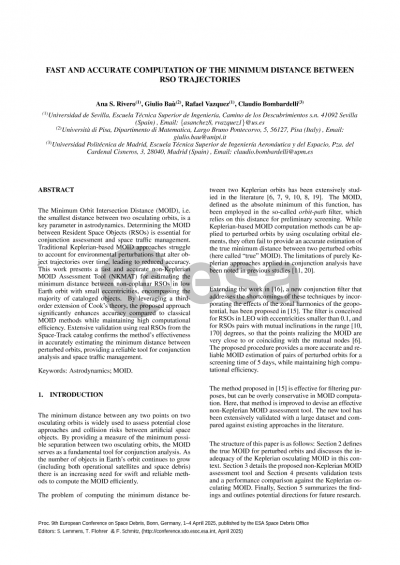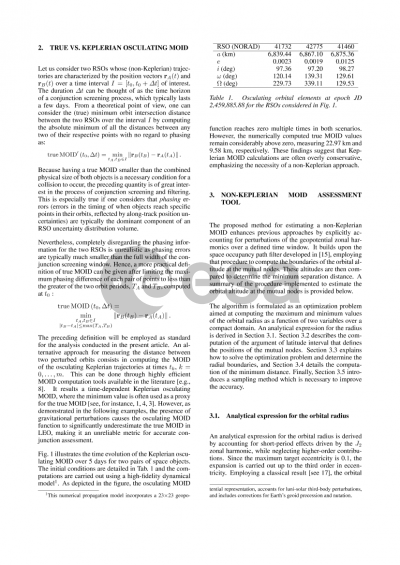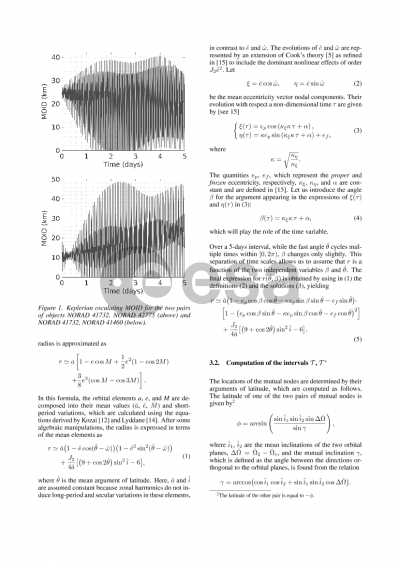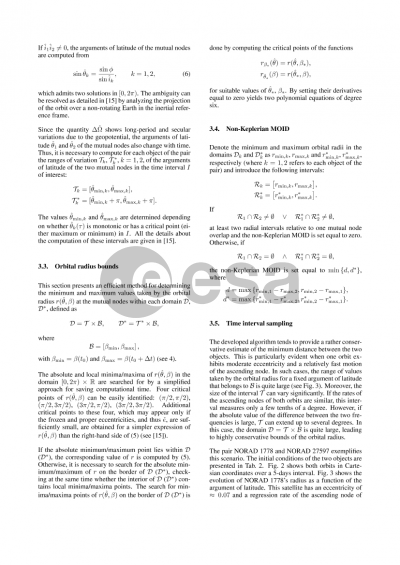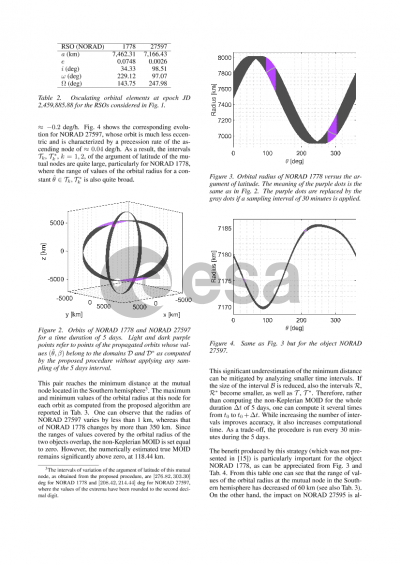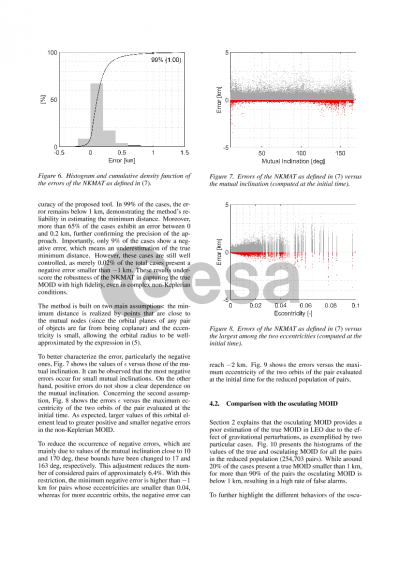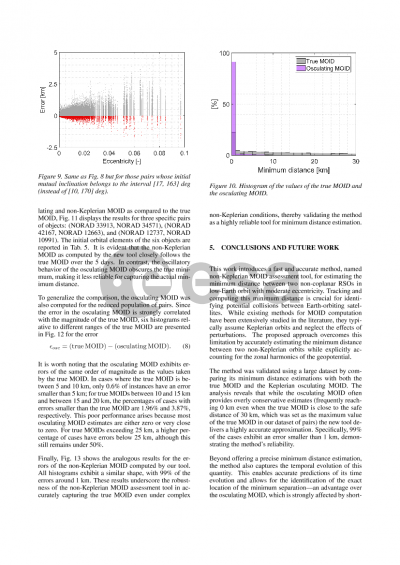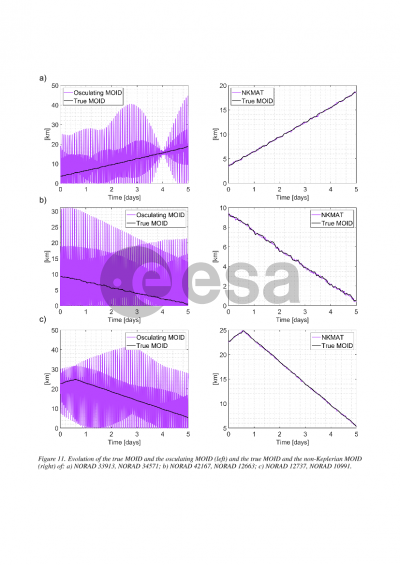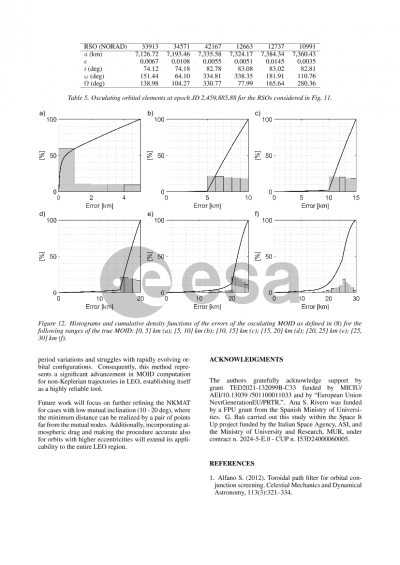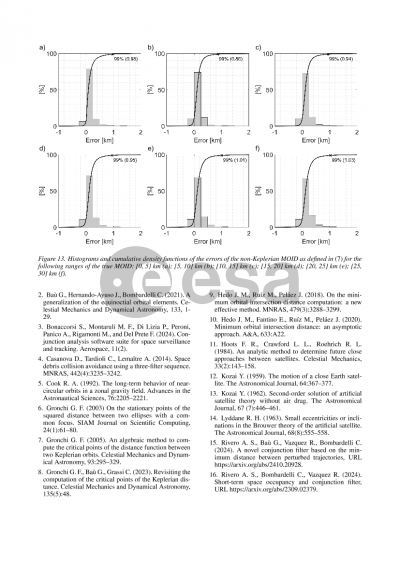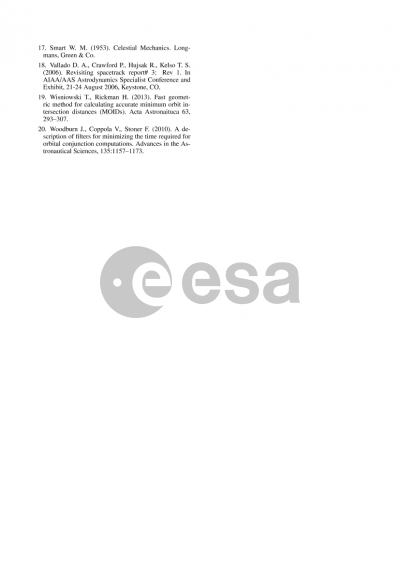Document details

Abstract
Computing the minimum orbit intersection distance (MOID) between pairs of resident space objects (RSOs) trajectories, as relevant for conjunction assessment and space traffic management, is an arduous task. One key challenge is associated to the effect of environmental perturbations that modify the path of the individual trajectories making a classical Keplerian MOID approach unsuitable. Building on recent advances in orbit path filtering for conjunction assessment, this work proposes a fast and effective method to estimate the minimum distance between two non-coplanar resident space objects in low-earth orbit with up to moderate eccentricity as applicable to the vast majority of catalogued objects. The method, which exploits a second-order extension of Cook's theory for the solution of the main satellite problem, is extensively tested with real RSOs in the space-track catalogue. A dramatic accuracy improvement compared to a classical Keplerian MOID approach is demonstrated together with a relatively high computational performance.
Preview
